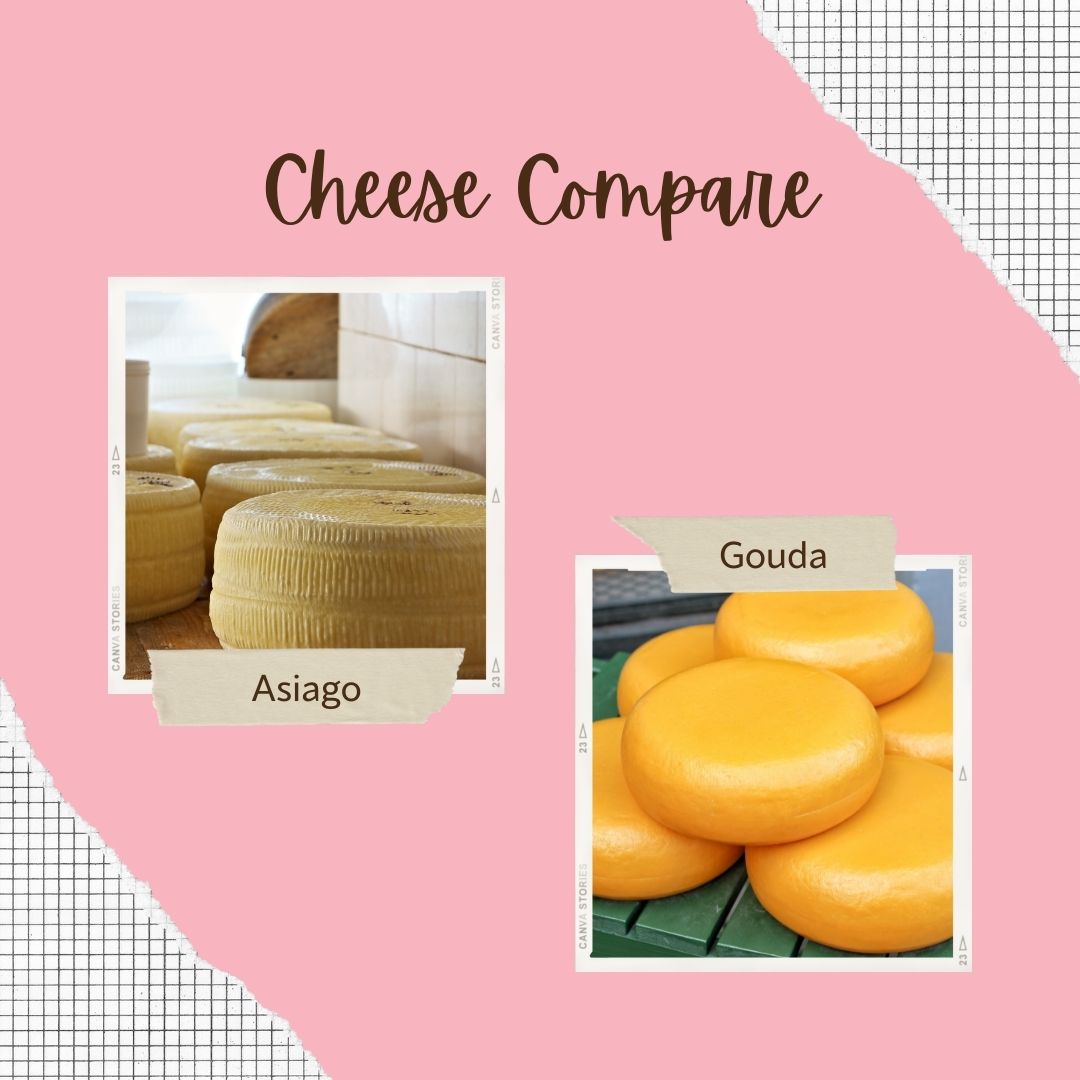Last Updated on November 5, 2022 by Aaron
Asiago and Gouda are two types of cheese that are often compared. They have many similarities, but there are also some key differences.
In this article, we will compare the two cheeses in terms of their characteristics. We will also discuss their productions and how they usually serve.
Hopefully, it will help you make an informed decision about which cheese is best for you.
Table of Contents
Are they the same?
Asiago and Gouda are not the same. For starters, Asiago is from Italy, while Gouda is from the Netherlands. Secondly, their textures are quite different. Asiago is crumblier and has a more granular texture, while Gouda is smoother and creamier.
The older gouda is much harder, drier, firmer, and flaky – you may see the cheese crystals too!
Asiago has irregular tiny holes or eyes, whereas gouda is often “blind” or has a few regular holes.
Finally, their flavors are also distinct. Asiago has a nutty, slightly spicy flavor, while Gouda is a more mellow and butterscotch-like flavor.
Waxed Rind
Unlike Asiago, Gouda is also commonly paraffin-waxed (1) with red, yellow, or black cheese coating. It’s edible and safe to eat, but you may find it unpleasant.
The wax sealed the moisture and prevented oxygen to get in. It also served as a protective layer for long-distance travel in the past to reduce spoilage.
Natamycin, an anti-fungal agent may be added too.
Age and Varieties
Another difference between the two of these cheeses is their age and varieties. Asiago often sells when about three to four months old; thus, it is classified as ‘somewhat aged cheese’. Usually imported from Italy.
Gouda is made in many countries – often refers to a general style of gouda making. It is also aged around the two to five months range, but it’s not uncommon to buy a very old gouda of 18 months or above.
Asiago is almost always made from cow’s milk. Gouda is often cow’s milk too, but you can also find Gouda may be made in various ways using goat or sheep milk. In addition, varieties such as smoked, herbed, and spiced up with truffles, dills, cumin, and caraway seeds.
Production
Asiago is an Italian swiss-style alpine cheese. The way it is produced is also similar to Swiss cheeses like Emmental and Gruyere. Therefore, you will be expecting to see low-cooking and hydraulically pressing for long hours. You can read more about how asiago is produced here.
Gouda, on the other hand, is a Dutch cheese made from cow’s milk. Similar to cheddar production, a similar process called curd-washing is done by adding water to dilute the whey in Gouda production. It’s generally used to make the cheese taste sweeter.
The Serve and Use
Asiago and Gouda are both quite versatile cheeses that can be used in a variety of dishes.
Both cheeses can be melted and used in sauces or gratins. Asiago is also great shaved over pasta or salads, while Gouda makes a delicious addition to mac n’ cheese, sandwiches, and burgers.
Additionally, Asiago can be used to make a cheese board interesting, while Gouda is also used as a dessert cheese. It pairs well with fruits like pears and apples, as well as with honey or red wine.
Nutrition
The nutrition value of Asiago had been previously discussed. Gouda’s nutrition obtained from USDA FoodData Central Castello.
Both Asiago and Gouda are high in protein and calcium. They provide a similar amount of calories and protein – about 100 calories and 7 grams per ounce respectively.
Asiago is having 27% more fat content than Gouda. So if you are doing a low-fat diet, gouda maybe is a slightly healthier and better choice.
They both also contain a small amount of micronutrients, including vitamin B12, Vitamin D, Zinc, Magnesium, and more.
Price
Asiago and Gouda have a pretty big price difference. The Imported Asiago is usually about $16-20 per pound, while Imported Gouda is about $7-20 for the same amount.
There are a few reasons for this price difference. Firstly, Asiago is an imported cheese from Italy, while Gouda is made in a variety of countries and sold worldwide. The Dutch Gouda is the most popular amongst, and the price may differ from brands and ages.
Secondly, Gouda is a more popular cheese than Asiago, so it’s mass-produced with higher supplies and therefore sold at a lower price.
Reference:

